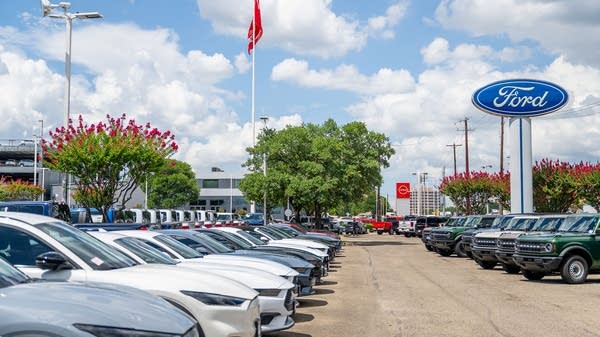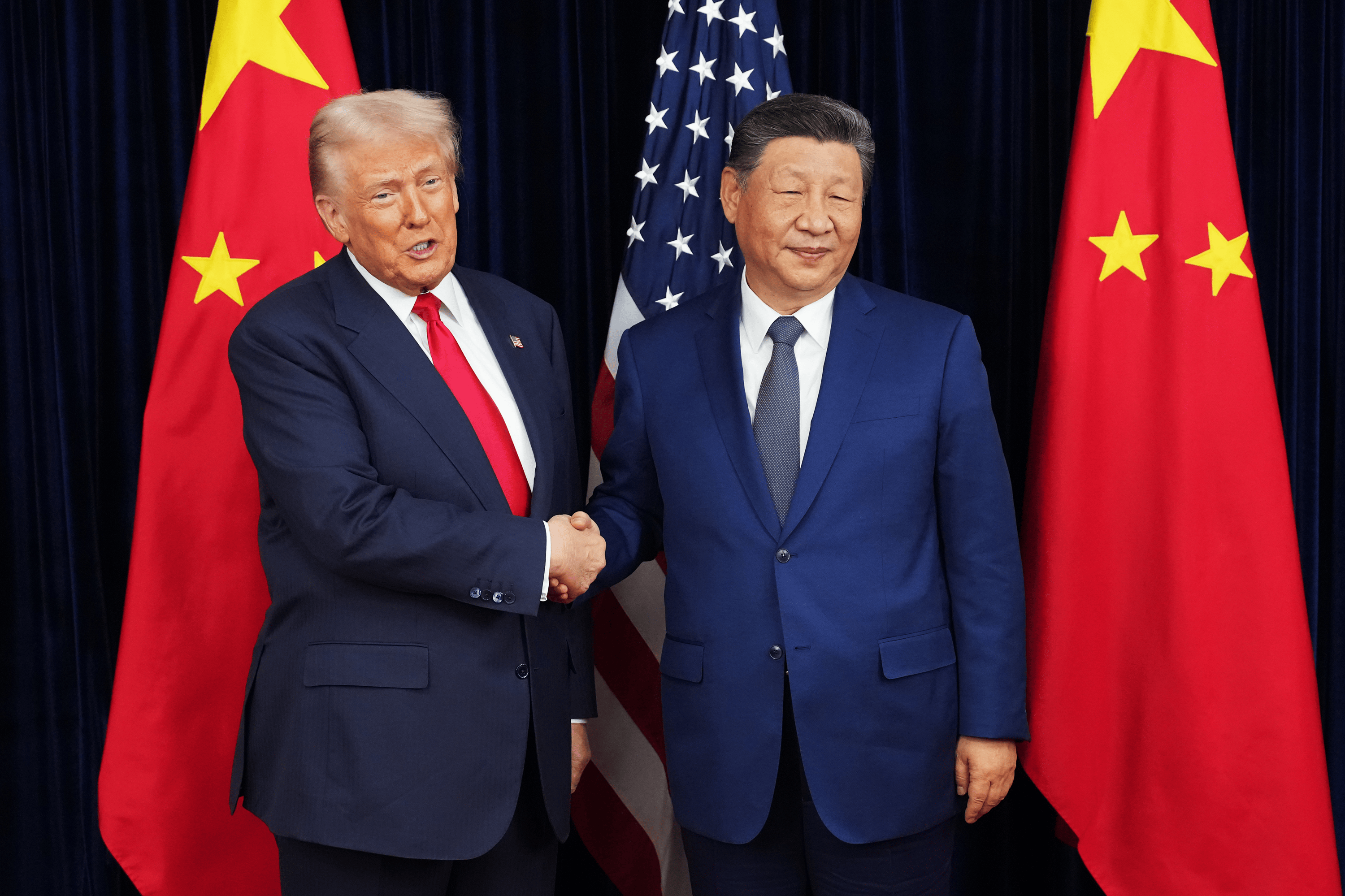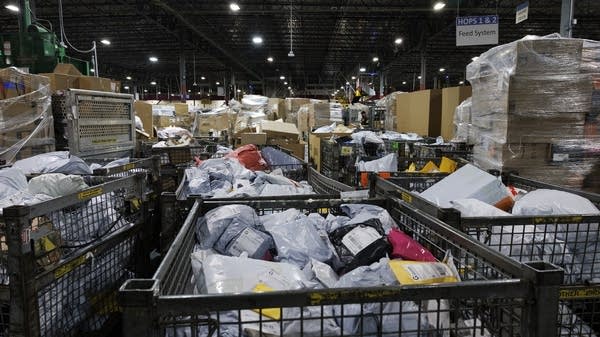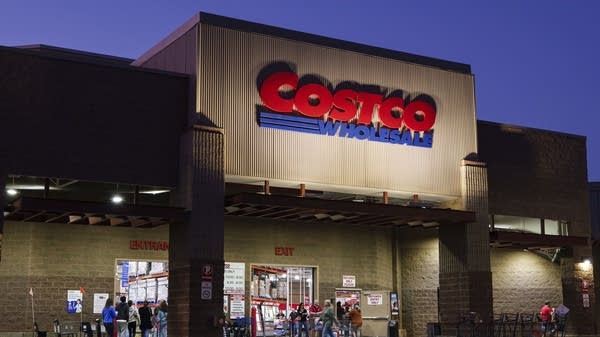After a spring sales surge, the car market seems to be trying to wait out tariffs
New vehicle sales jumped in the spring as consumers tried to get ahead of tariff-induced price increases. Sales have since cooled, but major price hikes haven’t yet arrived.

It’s been nearly three months since President Donald Trump’s so-called “liberation day.” Almost as soon as he announced nearly across-the-board tariffs, consumers went out to buy things before those import taxes caused prices to jump. But prices haven’t really budged — at least not yet.
That’s exactly what’s happened in the new car market: Sales surged, then fell back. And despite a 25% tariff on many imported cars and parts, prices haven’t moved much so far, making for an odd moment in the automotive market.
Scott Politte, president of Stivers Ford Lincoln just outside Des Moines, Iowa, noticed buyers snapping up luxury SUVs in April and May.
“When they saw the uncertainty with the tariffs, and the deals that Lincoln was offering, we saw a lot of luxury vehicle buyers take advantage of that,” he said.
It wasn’t just fancy Lincolns — Politte sells Fords too, and he said across the board in April and May, sales were way up compared to last year.
“Whether it's new or used and whether it's Ford or Lincoln, everything was up at least 50%. Some were up 100%.”
That was due in part to customers pulling forward their car purchases. Discounts from the manufacturer also moved a lot of cars, Politte said.
At some point, the prices of vehicles he sells will probably go up, he said. But so far, “we haven't seen it and nobody's told us what to expect.”
There are a few reasons for that: One is just the time it takes for a new vehicle to get to a dealership lot.
“It's simply the manufacturing of a vehicle, getting it to the port and at the port, having that tariff come into effect, and then you have to transfer it all the way to the dealership,” said Ivan Drury, director of insights at the car shopping site Edmunds.
On top of that, many carmakers this spring were sitting on a lot of unsold cars built before tariffs, Drury said. That’s partly why Ford and Lincoln offered discounts.
“They had very bloated inventories. So, by saying, ‘Look, we're going to help you out at the worst time possible for the consumer,’ it did help them,” Drury said. “They did need to clear out some inventory.”
But even as that inventory dwindles and cars subject to tariffs enter the market, many carmakers still aren’t rushing to raise prices.
“It is very clear that most automakers are sitting back and saying, ‘OK, let's wait and see how this comes together,’” said Stephanie Brinley, associate director of auto intelligence at S&P Global Mobility.
Their hope is that tariffs might not be permanent. Carmakers are also reluctant to hike prices now because new vehicle prices have already risen over 21% in the past five years, according to the consumer price index.
“There were affordability issues before we had this happen,” Brinley said. “So you don't want to be up and down on pricing. You want to raise that price as slowly as you can.”
But car companies will soon have a more routine opportunity to increase prices: the new model year. 2026 cars will start hitting lots soon, Brinley said. They’ll come with new features and technology, and they’ll be more expensive.
“The automakers have kind of wrapped that [price increase] up into a model year changeover,” Brinley said, “into some new technology, and to try and minimize it, at least not describe it as a tariff-related increase.”
Brinley said that will make it hard for consumers to tell how much of a price change is due to tariffs and how much is for that new touchscreen or leather interior.
In the meantime, dealers including Scott Politte in Iowa are still trying to move as much of their current inventory as possible. He said that the discount from Ford and Lincoln runs out in early July — right before the end of President Trump’s 90-day pause on even higher tariff rates.
“We're all waiting to see what happens that second week in July,” Politte said.













